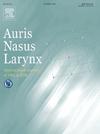Establishing a comprehensive national auditory implant registry in Japan: Trends and demographics from the first two years (2023–2024)
IF 1.5
4区 医学
Q2 OTORHINOLARYNGOLOGY
引用次数: 0
Abstract
Objective
To describe the establishment and initial findings of Japan’s first comprehensive nationwide registry covering cochlear implants (CIs), active middle ear implants (AMEIs), and bone conduction implants (BCIs), launched in 2023. The registry aims to improve national data collection, support evidence-based policymaking, and track trends in surgical practice and patient demographics.
Methods
A web-based electronic data capture (EDC) system was implemented to replace the previous paper-based reporting system. Between January 2023 and December 2024, data were voluntarily submitted by participating facilities across Japan. Collected data included patient demographics, implant types, hearing thresholds, etiologies, and manufacturer information. Registry completeness was assessed by comparison with Japan’s National Database of Health Insurance Claims (NDB).
Results
A total of 1880 patients were registered, and 1809 patients with surgical information entered from 104 facilities were selected for analysis, comprising 1723 CI cases and 86 AMEI or BCI cases (11 VSB, 22 BB, 53 Baha). Among 605 pediatric CI recipients, early-age implantation was increasingly observed, with 58 patients (10 %) aged under 1 year and 183 (30 %) aged 1 year. Among adult CI recipients, 271 patients were aged 75 years or older, including 40 patients aged 85 years or older. Additionally, simultaneous bilateral CI surgery was performed in 265 patients, of whom 175 were children, reflecting the expanding indications. Patients with better ear thresholds <90 dB HL accounted for 33 % of adults and 29 % of children. Congenital hearing loss predominated in children, while acquired causes were more common in adults. Among cases with a known etiology, hereditary deafness was the most common (24.5 %), although 39.6 % of etiologies were unknown. CI data completeness reached 73 % compared with NDB, indicating strong nationwide participation and a high level of data reliability.
Conclusion
This is the first comprehensive report from the national registry in Japan that includes not only CIs but also AMEIs and BCIs. The registry demonstrated reliable data capture and highlighted important trends in patient demographics and surgical practices. Continued data collection will enhance clinical decision-making and support policy development, ultimately improving care for auditory implant recipients.
在日本建立一个全面的国家听觉植入注册:前两年(2023-2024)的趋势和人口统计数据。
目的:描述日本第一个涵盖人工耳蜗(CIs)、主动中耳植入物(AMEIs)和骨传导植入物(bci)的全面全国注册系统的建立和初步发现,该系统将于2023年启动。该登记处旨在改善国家数据收集,支持基于证据的政策制定,并跟踪外科实践和患者人口统计的趋势。方法:采用基于网络的电子数据采集(EDC)系统取代以往的纸质报告系统。在2023年1月至2024年12月期间,日本各地的参与设施自愿提交了数据。收集的数据包括患者人口统计、植入物类型、听力阈值、病因和制造商信息。通过与日本国家健康保险索赔数据库(NDB)的比较来评估登记完整性。结果:共登记1880例患者,选取104家医院输入的1809例手术信息进行分析,其中CI 1723例,AMEI或BCI 86例(VSB 11例,BB 22例,Baha 53例)。在605例儿童CI受者中,越来越多地观察到早期植入,其中58例(10%)患者年龄在1岁以下,183例(30%)患者年龄在1岁。在成人CI接受者中,271例患者年龄在75岁及以上,其中40例患者年龄在85岁及以上。此外,265例患者同时进行了双侧CI手术,其中175例为儿童,反映了适应症的扩大。结论:这是日本国家登记的第一份综合报告,不仅包括ci,还包括amei和bci。该登记处展示了可靠的数据捕获,并突出了患者人口统计和手术实践的重要趋势。持续的数据收集将加强临床决策和支持政策的制定,最终改善听觉植入接受者的护理。
本文章由计算机程序翻译,如有差异,请以英文原文为准。
求助全文
约1分钟内获得全文
求助全文
来源期刊

Auris Nasus Larynx
医学-耳鼻喉科学
CiteScore
3.40
自引率
5.90%
发文量
169
审稿时长
30 days
期刊介绍:
The international journal Auris Nasus Larynx provides the opportunity for rapid, carefully reviewed publications concerning the fundamental and clinical aspects of otorhinolaryngology and related fields. This includes otology, neurotology, bronchoesophagology, laryngology, rhinology, allergology, head and neck medicine and oncologic surgery, maxillofacial and plastic surgery, audiology, speech science.
Original papers, short communications and original case reports can be submitted. Reviews on recent developments are invited regularly and Letters to the Editor commenting on papers or any aspect of Auris Nasus Larynx are welcomed.
Founded in 1973 and previously published by the Society for Promotion of International Otorhinolaryngology, the journal is now the official English-language journal of the Oto-Rhino-Laryngological Society of Japan, Inc. The aim of its new international Editorial Board is to make Auris Nasus Larynx an international forum for high quality research and clinical sciences.
 求助内容:
求助内容: 应助结果提醒方式:
应助结果提醒方式:


